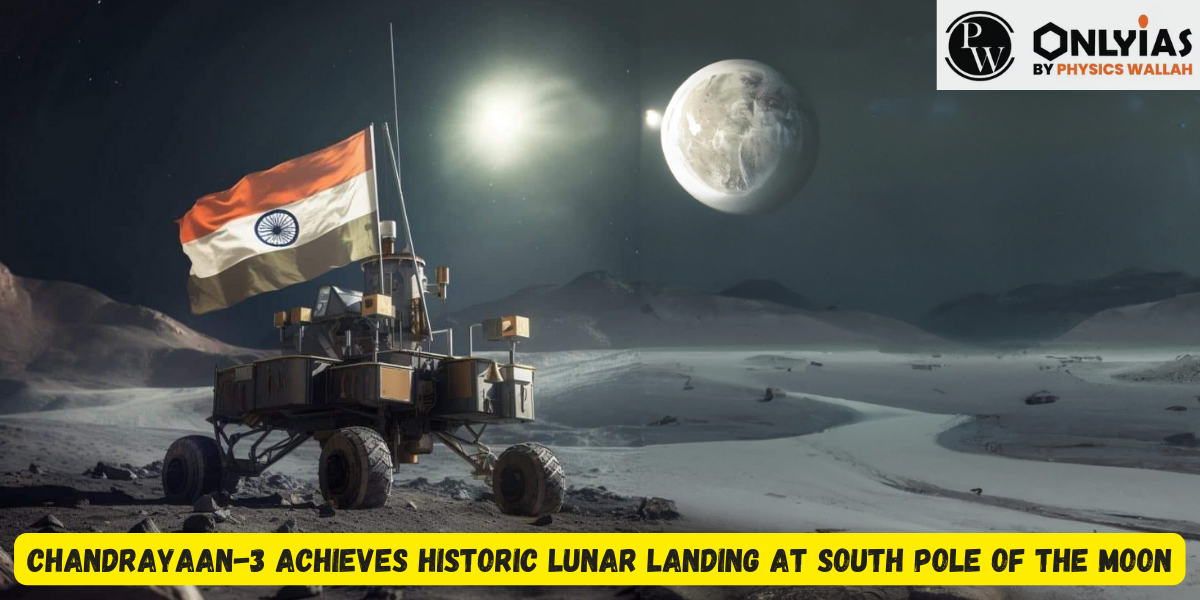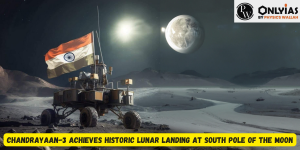
India has etched its name in history by successfully executing a lunar landing in the uncharted region of the moon’s southern pole, as Chandrayaan-3 has landed on the moon successfully.
This landmark event places India among a select group of countries that have achieved a soft landing on the Moon’s surface, a feat previously accomplished by the US, the former Soviet Union, and China.

The Vikram lander of the Chandrayaan-3 mission gracefully descended, touching down at 18:04 local time (12:34 GMT) as per plan.
Across the nation, celebrations erupted, and Prime Minister Narendra Modi expressed his pride, exclaiming, “India is now on the Moon.” He watched the event unfold live from South Africa where he was attending the Brics summit.
Sreedhara Panicker Somanath, the chief of the Indian Space Research Organisation (ISRO), emphasized that this triumph was a result of collective efforts spanning generations of ISRO scientists.
India’s success follows closely on the heels of Russia’s Luna-25 spacecraft’s untimely loss of control and subsequent crash on the Moon, shedding light on the daunting challenges posed by the uneven and crater-filled terrain of the southern pole region.
India’s previous lunar mission, Chandrayaan-2, encountered setbacks during its 2019 soft landing attempt, resulting in the loss of its lander and rover, although its orbiter continued its mission successfully.
During a tense descent, the Vikram lander, named after ISRO founder Vikram Sarabhai, gradually reduced its speed from 1.68 kilometers per second to nearly zero, culminating in a gentle lunar touchdown. Safely nestled within Vikram was the 26-kilogram rover named Pragyaan, which means “wisdom” in Sanskrit.
With time, the rover will emerge from Vikram’s embrace to explore the Moon’s rocky landscape and craters. It will collect invaluable data and images to be transmitted back to Earth, contributing to the advancement of lunar exploration.
One of the mission’s primary objectives is to locate water-based ice, vital for future lunar habitation and propellant for spacecraft headed to distant destinations like Mars. The rover and lander are equipped with scientific instruments to study the moon’s surface, atmosphere, tectonic activity, and more.
The rover bears an Indian flag and the emblem of ISRO, leaving imprints on the lunar surface as it traverses. Chandrayaan-3, India’s third lunar mission, aims to build upon prior successes and achieve substantial scientific breakthroughs.

This achievement follows India’s first Moon mission, Chandrayaan-1, in 2008, which uncovered water molecules on the lunar surface and revealed the presence of an atmosphere during daylight. Despite Chandrayaan-2’s landing setback, its orbiter continues to orbit the Moon, transmitting images and data to Earth.
India’s lunar endeavors align with a growing global interest in lunar exploration, underscoring the Moon’s status as a gateway to deeper space exploration. The mysteries of the Moon continue to beckon scientists worldwide.

<div class="new-fform">
</div>